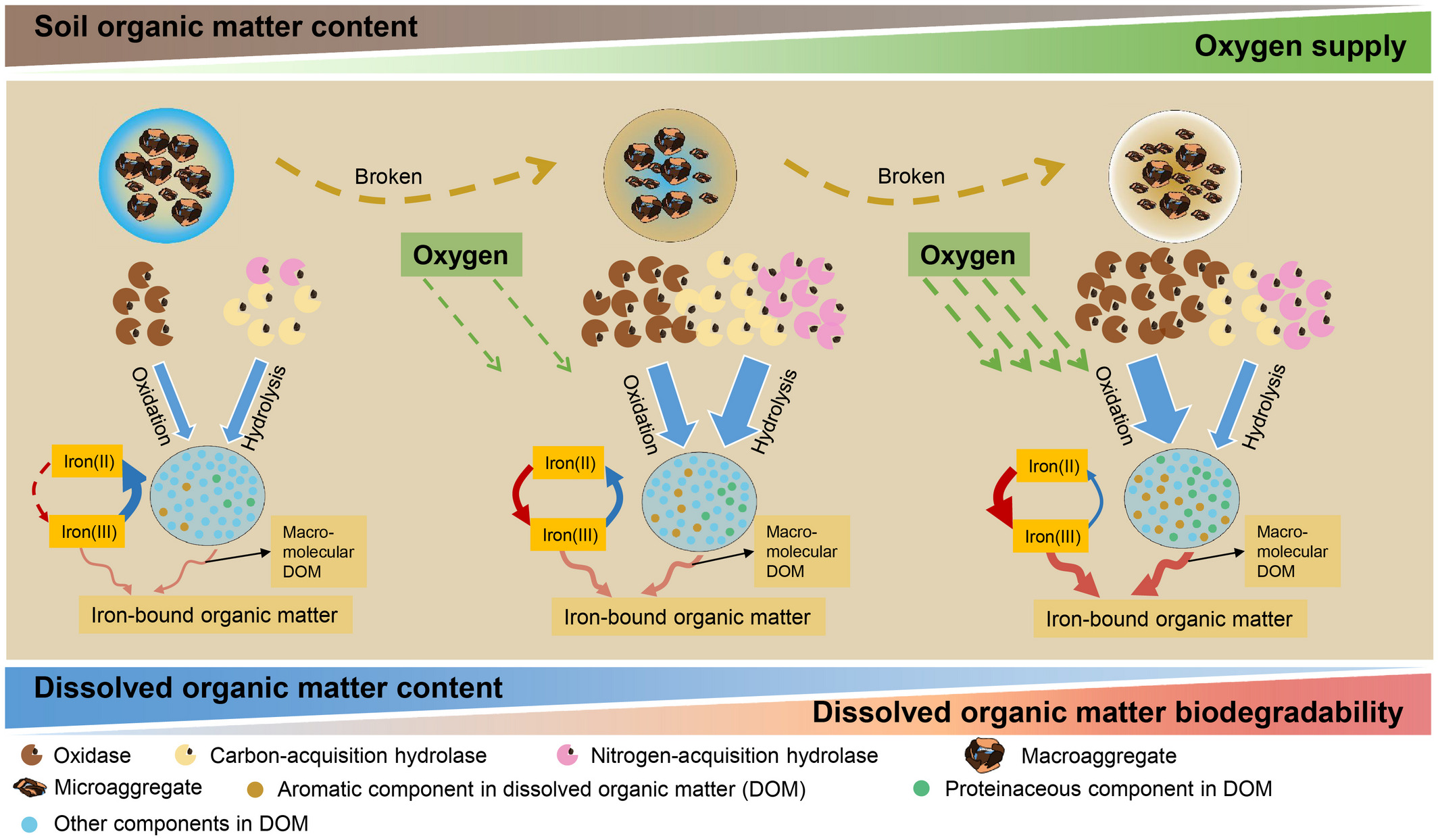Oxygen availability regulates the quality of soil dissolved organic matter by mediating microbial metabolism and iron oxidation
Fig. A conceptual diagram illustrating the oxygen-induced dissolved organic matter (DOM) dynamics and the underline mechanisms.
Dissolved organic matter (DOM) plays a vital role in biogeochemical processes and in determining the responses of soil organic matter (SOM) to global change. Although the quantity of soil DOM has been inventoried across diverse spatio-temporal scales, the underlying mechanisms accounting for variability in DOM dynamics remain unclear especially in upland ecosystems. Here, a gradient of SOM storage across 12 croplands in northeast China was used to understand links between DOM dynamics, microbial metabolism, and abiotic conditions. We assessed the composition, biodegradability, and key biodegradable components of DOM. In addition, SOM and mineral-associated organic matter (MAOM) composition, soil enzyme activities, oxygen availability, soil texture, and iron (Fe), Fe-bound organic matter, and nutrient concentrations were quantified to clarify the drivers of DOM quality (composition and biodegradability). The proportion of biodegradable DOM increased exponentially with decreasing initial DOM concentration due to larger fractions of depolymerized DOM that was rich in small-molecular phenols and proteinaceous components. Unexpectedly, the composition of DOM was decoupled from that of SOM or MAOM, but significantly related to enzymatic properties. These results indicate that microbial metabolism exhibited a dominant role in DOM generation. As DOM concentration declined, increased soil oxygen availability regulated DOM composition and enhanced its biodegradability mainly through mediating microbial metabolism and Fe oxidation. The oxygen-induced oxidation of Fe(II) to Fe(III) removed complex DOM compounds with large molecular weight. Moreover, increased oxygen availability stimulated oxidase-catalyzed depolymerization of aromatic substances, and promoted production of protein-like DOM components due to lower enzymatic C/N acquisition ratio. As global changes in temperature and moisture will have large impacts on soil oxygen availability, the role of oxygen in regulating DOM dynamics highlights the importance of integrating soil oxygen supply with microbial metabolism and Fe redox status to improve model predictions of soil carbon under climate change.
Read More:
Source: Global Change Biology

